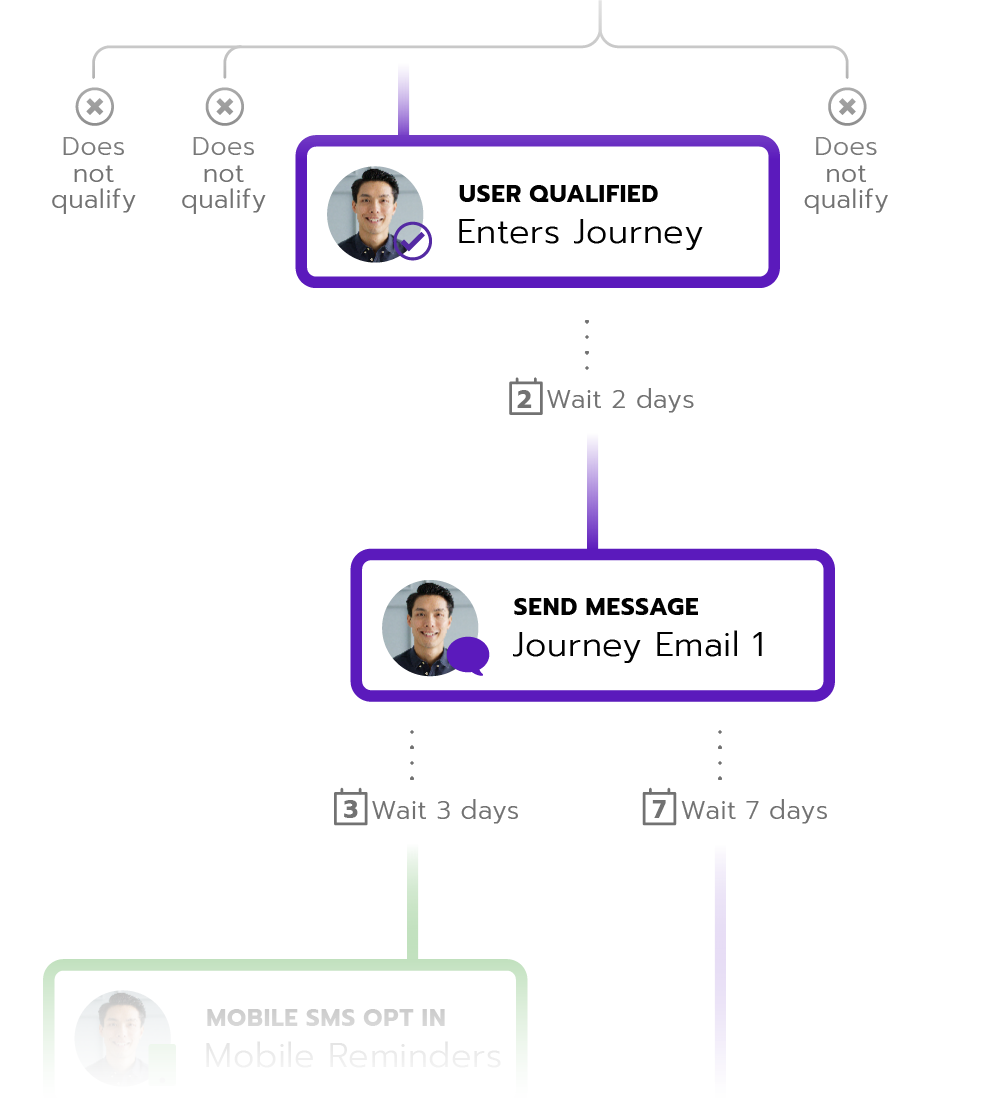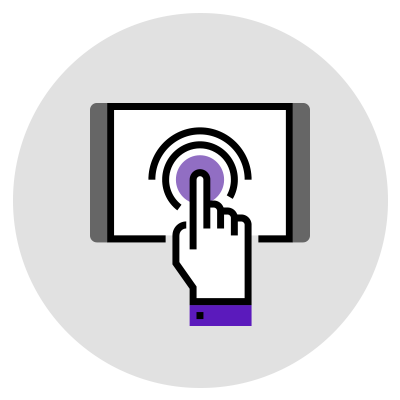
The Importance of Personalization in the Healthcare Industry
In today's competitive healthcare industry, personalization has become more important than ever. Hospital administrators and physicians are constantly seeking innovative ways to improve patient outcomes and satisfaction, while also streamlining their operations for optimized efficiency.
Healthcare device companies can utilize journey mapping to tailor their messaging approach to the unique needs of physicians and hospital administrators. Not only will this help you standout from the competition, it will also help you create a story only you can tell. By combining your understanding of your target audiences with the values your business’ unique product or services bring to the table, you will be able to clarify your marketing efforts and align them with your customer’s needs and goals.

Key Changes in Achieving Personalization in the Healthcare Industry
Without truly understanding who you are trying to reach with your messaging, your marketing efforts can easily fall flat and come across disingenuous. Some of the top challenges in achieving personalization in the healthcare industry comes from healthcare-based businesses doing guesswork and using a one size fits all approach. Although this might seem to work in the short term, in the long-term these one off campaigns always hit a plateau and fall short. Without a proper strategy in place, you can run the risk of:
- Failing to make content specific to segmented audiences which can lead to irrelevant messages that fail to resonate with your intended target audience
- Ignoring context which can lead to delivering inappropriate or insensitive content
- Failure to be transparent, which can erode customer trust and damage your reputation
- Neglecting the customer experience which can lead to fragmented messaging
This is where journey mapping and personalization comes into play. Using secondary research, interviews, and surveys to develop journey maps specific to different target audiences will ensure empathetic and intuitive marketing and communication efforts for your business.
How Journey Mapping Can Help Healthcare Businesses Achieve Personalization
Here at Grayduck Health, we believe personalization plays a significant role in the healthcare industry. Personalization allows brands to focus less on their own story and more on their customers' stories. Businesses that make their customers the hero of the story are able to create stronger, long-lasting relationships that are mutually beneficial and drive sales.

Truly understanding the customer's experience across different touch-points or interactions with your business will allow you to create an experience that is seamless from the initial contact to the point of purchase and beyond.
Personalization, however, is only one of the 6 key components of a good user experience. Once you understand and build your user journey (personalize it), it will open doors for you to be able to optimize the other components for a good user experience. The other 5 components include usability, accessibility, clarity, consistency, and empathy.
In this blog, we are focusing on journey mapping. We’ll start off by taking a look at the different types of journey maps and how you can decide which one is right for your business.

What Are The Different Types of Journey Maps
There are several kinds of journey maps that businesses can use to get insights into their customers’ experiences on and offline. Here’s a list of the most popular journey maps and how you can utilize them for your business:
Current-State Journey Maps
Current state journey maps document the customer’s current user experiences with a product or a service. These types of maps are the most rooted in data. You record steps from initial awareness to post-purchase evaluation by looking at all your channel data. Consider this journey map is an audit that can be used to identify key pain points and areas for improvement in the customer journey. Use this journey map to get audience insights that can be used to get ideas for personalizing future campaigns.
Future-State Journey Maps
Consider developing future-state journey maps as a visionary exercise that you can use to illustrate the ideal experience you want your customers to experience. Use this kind of journey to guide product and strategy messaging development and to set the standard for your smart customer experience goals.
Persona-Based Journey Maps
Persona-based journey maps are created on specific customer data. This data can be derived from the current channels you use to reach your customers or from extensive audience research and social listening. Key information used to develop themes personas include demographic and psychographic data that is specific to different audience segments. For example, Medical technology companies can create buyer personas such as hospital administrators or physicians, then use those details to develop a personalized content experience.
Channel-Based Journey Maps
Channel-specific journey maps are great for optimizing your strategy for reaching your target audience tactfully. These kinds of maps focus on specific channels or touch-points in the customer journey. For example, you can focus on your website and implement a web audit to discover which key pieces of content or pages in your website resonate with your target audience. You can use these insights to tailor a unique journey map by tweaking your website architecture and content to optimize the user experience.
How to Create a Journey Map Step-By-Step
Now that you know the different types of journey maps, it’s time to learn about the steps included in developing a comprehensive journey map for your healthcare-based business. It is crucial for medical device companies targeting hospital buyers and decision makers to understand the benefits of creating a healthcare journey map to improve the patient experience.
This valuable exercise will help your business identify and understand pain points and areas of improvement for your target audience. These insights can be used to inform your business and marketing strategy to tailor to the needs and desires of hospital buyers and decision makers. In our experience, this is the best way to long term relationships that last beyond the sale. Here are the steps to developing a customer journey map for your medical device business.
Step 1: Define the Hospital Buyer Persona
The first step for medical device companies targeting hospital buyers and decision makers is to define the hospital buyer persona. Personas are fictional characters that represent a particular segment of your target audience. This involves including key decision-makers in a hospital, such as department heads, purchasing managers, and other influencers. Once you identify these individuals, you then have to understand their motivations, goals, pain points, and key decision-making biases. Whether you do this in a bulleted document or in a deck layout, the key is to gather as much information as you can to make each audience specific.

Step 2: Identify the Healthcare Facility's Goal and Needs
Once you have your buyer personas fleshed out, the next step is taking a deep dive into the hospital’s goals and needs from the perspective of what your service or product can do to meet these goals and needs. This involves breaking down what the hospital aspires to achieve by using your product or service and what obstacles they may face. Also, consider other factors that may be of importance to them such as cost effectiveness and patient outcomes.
Step 3: Map Out The Healthcare Facility's Patient Care Journey
The third step is to map out the hospital's patient care journey. This involves identifying all the touch-points and interactions that patients have with the hospital and physicians, from admission to discharge. This step should include the medical devices used at each touchpoint, including their function, performance, and reliability, as well as the physicians who provide them with care.

Step 4: Analyze Pain Points and Areas of Improvement
Understanding the pain points and areas of improvement for hospital buyers is critical to providing innovative solutions that can enhance patient care. Truly understanding your audience's pain points will enable you to showcase your company’s commitment to developing products that help them provide the best possible care to their patients. It also allows you to create messaging and campaigns that resonate with your audience on an emotional level.
Step 5: Create a Plan for Improvement and Personalization
The last step includes gathering all the insights from the previous 4 steps and using them to develop content strategy that enhances the customer experience. Your strategy could include improvements to the product or service messaging, customer service messaging, or modifications to your overall business messaging. Whatever your goal is, keep in mind that monitoring, testing, and measuring your updates should be a must to keep the momentum going. Doing this will ensure that your product, services, and marketing efforts always stay up to par with your audience’s expectations.

How to Validate Your Journey Map Across Your Organization

Share your customer journey map with key stakeholders, departments heads, and internal teams to better validate if these journey maps are consistent with their expectations.

Keep internal teams informed about updates to your journey maps and ask for feedback to gain more insights on how these journey maps can be optimized.
Conclusion
Personalized journey mapping is crucial in reaching healthcare facility buyers and decision makers. Showcasing an understanding of your target audience’s needs enables you to overcome communication barriers and open the door to long lasting partnerships.
Keep in mind, audience data analysis and insights play a big role in journey mapping. Before jumping into developing a journey map for your target audience, be sure you gather sufficient insights to build specific buyer personas and audience segments. Only then will you be able to create a truly superior customer experience. As marketing technology continues to evolve, journey mapping and personalized healthcare services will remain essential for healthcare businesses looking to succeed in a competitive market.
